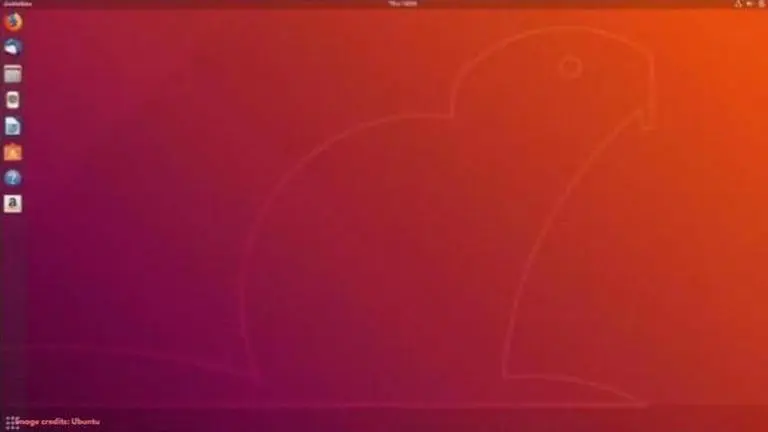Updated 4 March 2020 at 13:17 IST
Ubuntu shortcut keys every user needs to know to be more productive
Ubuntu is a free open source Debian-based Linux distribution and is considered good for beginners. It also comes with many Ubuntu shortcut keys for productivity
- Tech News
- 5 min read

Ubuntu is an open-source Linux operating system which powers millions of desktops and laptops across the world. Users can work on the Ubuntu OS using a keyboard and mouse. However, working with keyboard shortcut keys can certainly save you a lot of time while looking more professional. Today, we bring some of the most essential shortcuts you should know to become productive.
These keyboard shortcut keys will work on the latest Ubuntu 18.04 GNOME edition. However, most of these combinations will also work on previous versions.
Also Read | Tally Shortcut Keys List: All Tally Shortcuts Every Accounting Professional Needs To Know
Desktop Keyboard Shortcuts
The GNOME desktop environment allows users to work with numerous keyboard shortcut combinations for exploring and navigating through the desktop. Here's a look.
Advertisement
- Alt + F2 – Opens a command dialog box which can be used for launching an application, running commands and scripts
- Super + D – Minimises the windows and comes back to the desktop
- Super + Tab or Alt + Tab – Switches between multiple applications
- Ctrl + Alt + Up Arrow – Takes you to the previous workspace
- Ctrl + Alt + Down Arrow – Takes you to the next workspace
- Shift + Ctrl + Alt + Up Arrow – Moves an open application to the previous workspace
- Shift + Ctrl + Alt + Down Arrow – Moves an open application to the next workspace
- Super + Left Arrow – Takes a snap of the current application so that it takes up the left portion of the screen
- Super + Right Arrow – Takes a snap of the current application so that it takes up the right portion of the screen
- Super + Up Arrow – Maximises the open application
- Super + Down Arrow – Restores down the open application
- Ctrl + Alt + L – Locks the screen and asks you to log back in when you wish to use it again
- Ctrl + Alt + Del – Logs you out of the current session
Opening and Closing Terminal Windows
- Ctrl + Alt + T or Shift + Ctrl + N – Opens a new terminal window
- Shift + Ctrl + Q – Closes the current terminal window
Terminal Window Tabs
- Shift + Ctrl + T – Opens a new tab
- Shift + Ctrl + W – Closes the current tab
- Ctrl + Page Up – Moves to the previous tab
- Ctrl + Page Down – Moves to the next tab
- Shift + Ctrl + Page Up key – Moves on to the left tab
- Shift + Ctrl + Page Down key – Moves on to the right tab
- Alt + 1 – Moves to Tab 1
- Alt + 2 – Moves to Tab 2
- Alt + 3 – Moves to Tab 3, and so on (It can be used up to Alt + 9 to move to Tab 9)
- Alt + 0 – Moves to Tab 10
Command Line Editing
- Shift + Ctrl + C – Copies the highlighted text. You will need to highlight the text with a mouse
- Shift + Ctrl + V – Pastes the text copied in a terminal window. When pasting data into an app like a text editor, you can use Ctrl + V
- Ctrl + A or Home key – Takes you to the beginning of a command line
- Ctrl + E or End key – Takes you to the end of a command line
- Alt + B or Ctrl + Left Arrow – Moves the cursor backward by one word
- Ctrl + B or Left Arrow – Moves the cursor backward by one character
- Alt + F or Ctrl + Right Arrow – Moves the cursor forward by one word
- Ctrl + F or Right Arrow – Moves the cursor forward by one character
- Ctrl + XX – Helps move between the current position of the cursor and the beginning of the line. You can hold the Ctrl key and tap X twice
- Ctrl + D or Delete – Deletes the character that is under the cursor
- Ctrl + U – Deletes all the characters that come before the cursor
- Alt + D – Deletes all characters that come after the cursor
- Ctrl + H or Backspace key – Deletes the character that comes before the cursor
Advertisement
Controlling the Terminal Display
- Ctrl + L – Clears the terminal window
- Ctrl + S – Stops the scrolling output; however, the program still runs in the background
- Ctrl + Q – Restarts the scrolling output if earlier stopped using Ctrl + S
Searching in a Terminal Window
- Shift + Ctrl + F – Finds a search term
- Shift + Ctrl + G – Finds the next occurrence of the search term
- Shift + Ctrl + H – Finds the previous occurrence of the search term
- Shift + Ctrl + J – Clears the highlighted text
Image credits: Ubuntu
Published By : Danish Ansari
Published On: 4 March 2020 at 13:17 IST
